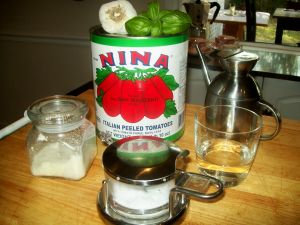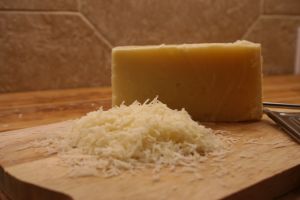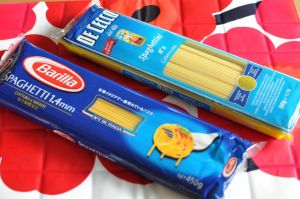Recipes
Tomato Sauce - An Overview |
About this recipe
There are five basic steps to making tomato sauce:
Instructions
1. Fry onion and garlic in olive oil: Use real olive oil from Italy. If cooking bacon or loose sausage meat in the sauce, use less. The onion can be diced and left in, or added whole to flavour and then discarded when the sauce is ready. The garlic can also be minced into small pieces and left in, or squashed whole, used to flavour the oil, and then removed before browning. Usually, this second method is best.
2. Add meat, spices, and wine: Many types of meat can be used (e.g., ground beef, sausage, chicken, pork chops), or beans can be used instead (e.g., cannellini, chickpeas, romano). Add basil because tomatoes love basil. Add chili to make the sauce hot. Add marjoram if the sauce is made with beef, veal, or pork. Use salt for flavour and add black pepper if not using chili. And if you have fresh parsley on hand, throw some in. P.S. If using fresh basil, add with the tomatoes.
Let meat brown until released water is cooked off before adding the wine. Wine is added to flavour the meat. Use white wine if you can (but if a bottle of red is open, go for it). Turn heat down and cover for 10-15 minutes to let wine absorb into your meat. Then uncover, increase heat, and cook until liquid is almost evaporated.
It’s also nice to add soup bones for extra flavour. Have the butcher cut them into small pieces to expose lots of marrow. P.S. If you can’t find any bones, you’ll have to go without—never use the dog's instead.
3. Add tomatoes, water, celery, and carrot: Use canned plum tomatoes from Italy (avoid crushed tomatoes—they’re for pizza). There are two ways to treat the tomatoes: either hand-squash in a bowl removing any hard stems, or blend for five seconds in a blender. If adding 2 cans, try blending one and hand-squashing the other.
After adding the tomatoes, swish out the can or the blender with water and add it to the pot. The amount of water you need depends on how thick your tomatoes are and how long you’re going to simmer.
Celery adds flavour and carrot absorbs the acid from the tomatoes. Discard the celery and carrot when the sauce is ready. If you don’t have a carrot and are not adding wine, add ¼ tsp. sugar.
4. Simmer: Simmer with a wooden spoon between the lid and pot, or with the lid slightly askew. If you’re in a hurry, simmer with the lid off (so the sauce takes less time to reduce). Generally speaking, the more tomatoes, the longer you simmer.
5. Uncover, add vegetables, and reduce: When the sauce has cooked long enough, uncover and let reduce to desired thickness (maybe 20 minutes, maybe more—depends on how much water you used). This is also a good time to taste for seasoning—it might need more salt, or maybe more chili pepper.
At this point you can add either fresh or frozen peas, or fresh or canned mushrooms. To add fresh mushrooms: microwave in water for 5 minutes and then rinse (this removes the black water from inside).
Notes
- If making fish sauce, don’t add cheese to the pasta.
- If your sauce is too spicy, add cream (but not for fish).
- Don’t forget to taste for salt and chili pepper—you may need more.
- To reheat leftover pasta, use water and a large frying pan (not the microwave).
- Let fresh sauce rest for 30 minutes before serving. This gives the tastes time to meld.
- If the sauce looks too thin, boil it longer with the lid off. If it looks too thick, add water.
- Tradition says tomato sauce tastes best when made in an aluminum pot. Next best is stainless steel with an aluminum bottom.
- If for some reason you don’t have enough sauce, mix in some butter with the pasta, or if appropriate, add cream to the sauce.
- Only add tomato paste if making a large pot with 4 or more cans of tomatoes. In this case whisk a 5 oz. can of tomato paste in a small bowl of water before adding.
- Never add pasta to boiling water unless you’re sure the sauce is almost ready—cooked pasta cannot wait for the sauce (and the Italian police may come and arrest you).
- Use dried pasta from Italy—we recommend Barilla and De Cecco brands. Cook pasta in lots of water, and add a small handful of salt to the boiling water (1-1½ tbsp. for 500 g / 1 lb. pasta). When testing the pasta for doneness, add more salt if need be. Do not add oil to the pasta water, and cook until tender yet firm (not mushy).
- Drain pasta (don’t rinse it) and put it back into the same pot you cooked it in (since it’s hot). Add the good Parmesan cheese you bought at the Italian store and maybe a little butter (if you’re thin or having company). Mix with a wooden spoon. Ladle some sauce into the pot (not too much) and mix well. Serve in pasta bowls with a little sauce and some cheese on top.
-
If you find all this too complicated, buy the stuff in a jar or try making pizza. Better yet, just make sandwiches (again).











